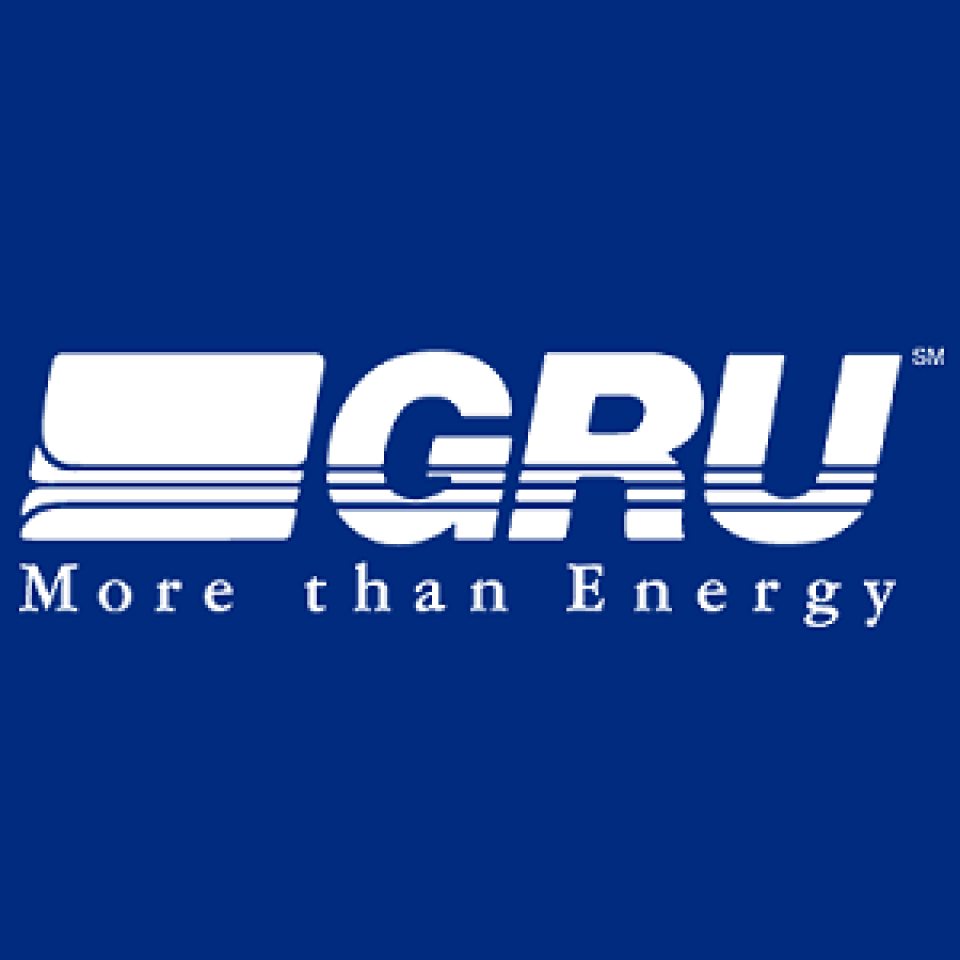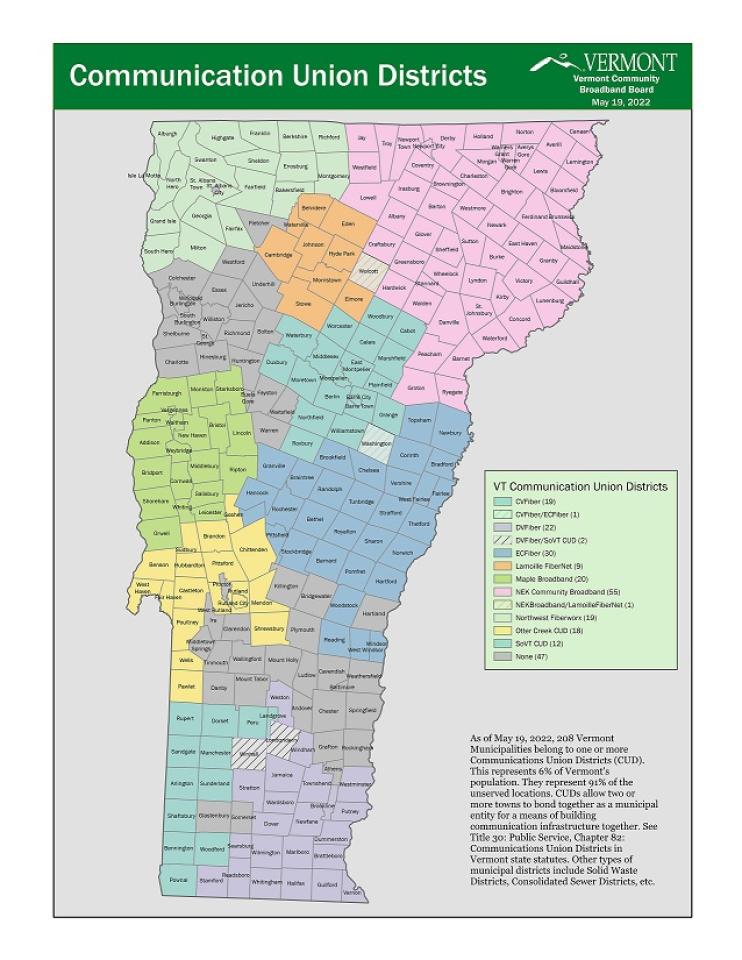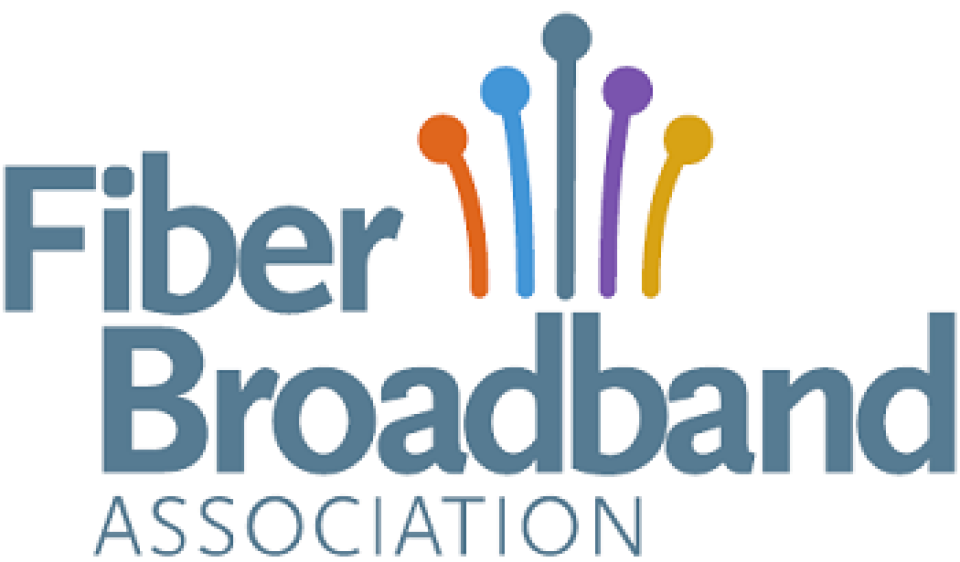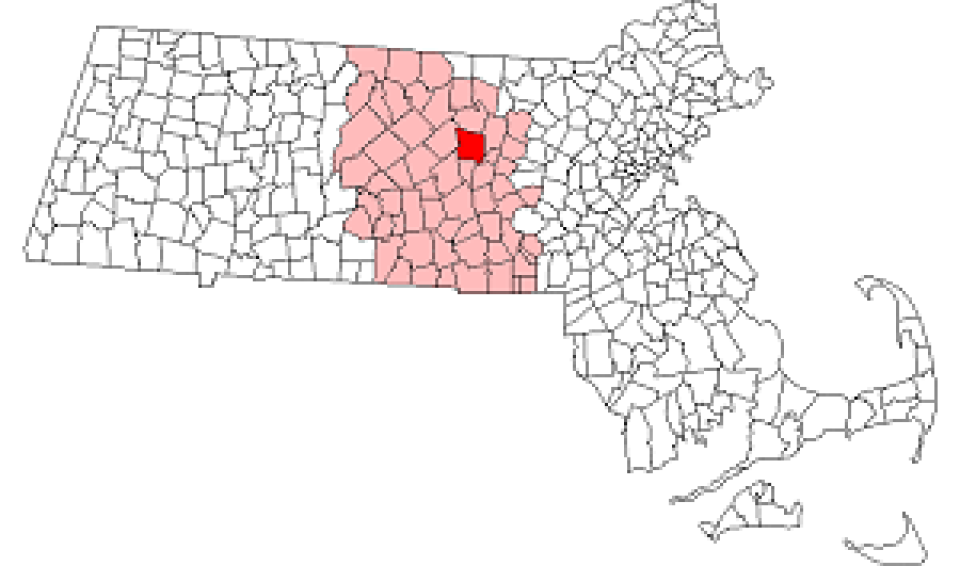
Fast, affordable Internet access for all.

Fiber to the Home
Whidbey Island, Washington is the latest region poised to benefit from a major, multi-pronged boost in state fiber investment. Financing provided by the Washington State Public Works Board, combined with federal broadband infrastructure acceleration grants, should soon dramatically expand affordable fiber across various parts of the island.
Last December, the Washington State Public Works Board approved $44.6 million in financing for 15 broadband projects across the state. That included $4.8 million for the Port of Coupeville on Whidbey Island to expand fiber-to-the-home (FTTH) broadband service to under-served island communities.
As with countless U.S. towns and cities, Covid-19 home schooling and telecommuting dramatically highlighted a need to improve access to affordable, future-proof broadband infrastructure.
“We learned during the pandemic when we were trying to do school and Zoom meetings or virtual meetings, that having that capacity in the Internet was critical to our ability to educate our kids, do business, operate government and even just have parties with our families when we’re in isolation,” Island County Commissioner Janet St. Clair recently told the Whidbey News Times.
Bidding Process For Potential Partners Now Open
Initial reports stated that the Port of Coupeville would primarily be working with Ziply fiber, which was expected to finance the remainder of the fiber project’s estimated $8 million price tag. Other reports suggested that Ziply would be seeing exclusive operation/ownership rights as part of the arrangement.
But Ziply and Port of Coupeville representatives told ILSR those reports were premature, the full scope and details of the project remain very much in flux, and additional bidders were now being considered.
While known for its annual "Tulip Time" celebration, Pella is now celebrating the flowering of a municipal fiber-to-the-home (FTTH) network in this small central Iowa city.
Network planners say construction, deploying 100 percent of the fiber underground, is on track to be finished this week. And, although the city has not launched a formal marketing campaign, they have already reached a take-rate of over 40 percent with one subscriber now getting 10 gig service.
The new network is known as Pella Fiber – a subsidiary of the city’s municipal electric utility, which, in the words of the Pella Chronicle, has been bringing “rays of light … (to) dispel the darkness” for residents and businesses in this community since 1911. Over a hundred years later, and with 92 percent approval at the ballot box, Pella voters in May of 2018 authorized the creation of a new municipal telecommunications utility that would transmit rays of light through fiber optic cables. The vote would lay the groundwork for future-proof connectivity in this city of about 10,000 residents, just 44 miles east of Des Moines.
It took two years to develop the business plan and design the network before the city hired Excel Utility Contractors to begin construction in June 2020. First having deployed nearly 34 miles of fiber, network builders connected Pella’s backbone to the Grinnell Hospital facilities nearby, a collaboration that linked the two cities, a critical part of the core network that allowed Pella to provide the needed bandwidth to build out to Pella residents and businesses.
Gainesville City Commissioners dealt a severe – if not fatal – blow to the expansion of municipal broadband in the Florida city where Gatorade was invented. Last week, five of the city’s seven commissioners voted to reject a proposal to spend $10 million of its American Rescue Plan funds to build a fiber-to-the-home (FTTH) pilot project.
As we reported here and here, city officials had been leaning in the direction of using $10 million of its $32 million in federal rescue plan funds to extend the city utility’s existing fiber network to bring high-speed Internet access to about 5,000 households caught on the wrong side of the digital divide.

Gainesville Regional Utility (GRU) has already deployed over 600 miles of fiber throughout the city, and for the past two decades, its subsidiary GATOR NET has been offering symmetrical gig-speed service to a limited number of area businesses, apartment buildings, government agencies, and community anchor institutions.
In 2017, the citizen-led group Connected Gainesville began a public campaign with the hopes of persuading city officials to bring FTTH service citywide in a market dominated by Cox Communications, the incumbent monopoly cable provider serving this city’s approximately 141,000 residents, 56,000 of whom attend the University of Florida.
Death-knell for Municipal Broadband in Gainesville?
NEK Broadband has been awarded a $16 million grant by the Vermont Community Broadband Board (VCBB) to expand fiber access to 10 new Vermont communities. It’s among the earliest of what is likely to be a flurry of activity by the mostly-newly created Communications Union Districts - partnerships between rural cities and towns - which have formed over the last few years to solve the connectivity crisis for the tens of thousands of Vermonters who have been left behind by the current broadband marketplace.
A New Approach
Vermont’s broadband policy leaders say they plan to embrace CUDs as the primary avenue by which they hope to bridge the state’s long standing digital divide. A significant portion of the state’s $150 million broadband package will be funneled toward CUDs in a state where 85 percent of municipalities and 90 percent of underserved locations fall within a CUD.

The formation of most of the state’s CUDs is relatively new, though the most veteran example (EC Fiber) formed more than fifteen years ago. After years of persistence by EC Fiber, determined progress, and attitudinal changes in policy at the state level, CUDs now sit at the heart of the state’s rural broadband efforts.
Breaking new ground in New York, state leaders are launching the first municipal fiber-to-the-home (FTTH) projects in the Empire State with funds from its new ConnectALL Initiative.
Four small rural communities in four different counties will be the beneficiaries of New York’s initial foray into municipal broadband, targeting “areas where existing state-owned fiber can create a fiber bridge between large data centers (first mile) and individual homes (last mile), primarily in rural areas that are not serviced by private broadband providers.”
At the end of May, Gov. Kathy Hochul’s office announced the $10 million grant award, which will fund fiber deployments to the Village of Sherburne in Chenango County, the Town of Nichols in Tioga County, the Town of Diana in Lewis County, and the Town of Pitcairn in St. Lawrence County.
A ‘Banner Day’ for Municipal Broadband
A collaborative project that includes the Empire State Development office, the Development Authority of the North Country (DANC) and the Southern Tier Network, the initial deployment will be managed by the New York Power Authority (NYPA) and begin in Sherburne.
In Sherburne (est. pop. 1,300), NYPA will be joining forces with the village’s municipal utility, Sherburne Electric, a NYPA municipal electricity customer, to extend NYPA’s existing middle mile fiber network and bring last-mile FTTH connectivity to the village’s 1,800 homes and businesses. The work is expected to be completed by the end of the year with residential and business service to be offered by yet-to-be-named private Internet Service Providers (ISPs).
When the grant was announced, Sherburne Mayor William Acee lauded the effort as “a banner day for Sherburne Electric customers.”
It’s been nine months since we launched our Big List of American Rescue Plan Act (ARPA) Community Broadband Projects, tracking what communities are doing with the various pots of federal money intended to go towards solving local broadband challenges. Since then, we’ve recorded 250 community projects and 27 states which have announced significant broadband grant programs or disbursement for new infrastructure projects. Here we highlight some of the community projects we’re really excited about, including those that have decided to build their own networks and those building on existing projects, as well as those using ARPA dollars for open access networks, affordable connectivity, or Internet access for students. We also discuss some examples of solutions we believe are less permanent, forward-thinking, or likely to result in long-term success, including the distribution of hotspots and the allocation of funds to monopoly providers.
What We’re Excited About: Community-Owned Networks and Open Access
Fortunately, we’re seeing a number of communities approve plans to spend their Rescue Plan dollars on building their own municipal networks. In Lexington, Tennessee (population 8,000), the city is collaborating with Lexington Electric to bring broadband to the community. An ARPA grant is expected to cover about $20 million of the total $50 million price tag, and the city will issue bonds for the rest. If this grant is received, Henderson County (28,000) – where Lexington is located – has agreed to a 10 percent match (from $300,000 to $500,000).
With a fiber-to-the-home (FTTH) boom sweeping across the nation as communities look to build or expand access to ubiquitous, reliable, high-speed Internet infrastructure, Fiber Connect 2022 is poised to bring together leading network operators well versed in a multitude of technologies, local government and public sector leaders, network builders, and an assortment leading industry experts later this month.
Coming on the heels of last year’s gathering – the largest Fiber Connect conference to date – this year’s event will return to Nashville from June 12 – 15. It promises a more expansive agenda with more exhibitors, special events, receptions, and networking opportunities, as well as a bigger showcase, which includes a new feature this year that presents six innovative Proof of Concept (PoC) Demonstrations that will be on display in the Fiber Connect 2022 Expo Hall.
This year’s conference will also feature a daily class on the FBA OpTIC™ Course, which is designed to “Train the Trainer” as the FBA ramps up its effort to cultivate future fiber technicians.

“The event will feature executives from a broad scope of industry sectors — traditional audiences as well as new audiences — commercial network operators, mobile network operators, electric cooperatives, municipalities, digital infrastructure asset owners and developers, investors, technology suppliers, enterprises and more,” says Gary Bolton, President and CEO of the Fiber Broadband Association, the host for the annual conference.
As communities across the Commonwealth of Massachusetts are at various planning stages in laying the groundwork to build their own municipal broadband networks, a rural Bay State town about 50 miles west of Boston has moved past the planning phase and is now offering municipal fiber-to-the-home (FTTH) service.
In Sterling (est. pop. 8,000) – the town that lays claim to Mary Sawyer Tyler, said to have inspired the “Mary Had a Little Lamb” poem – the town’s municipal utility is building out its aptly named Local Area Municipal Broadband (LAMB) network.
The project was initiated more than five years ago as a new division within the century-old Sterling Municipal Light Department (SMLD). As one of about 40 of the state’s 351 towns and cities with its own municipal electric utility, SMLD was awarded a $150,000 state grant to help finance the construction of a 23-mile regional I-Net ring in 2020. A year later, LAMB lit up its first residential customer in April of 2021.

Following an incremental approach, earlier this year, the LAMB added its 50th subscriber as construction crews are on track to build out a town-wide fiber network by the end of 2024.
Connecting with Nearby Towns
Like other communities across the nation with an established municipal utility, from a design and engineering standpoint, it was a relatively easy leap into broadband for SMLD, which currently supplies electricity to more than 3,700 residential, commercial and municipal customers.

This week on the podcast, Christopher is joined by John Lester, General Manager of Clarksville Connected. The two discuss how Clarksville, a small rural community of about 10,000 in northwest Arkansas at the foothills of the Ozark Mountains, became the Natural State’s first 2 gig city.
Chris and John cover how Clarksville became the first city in Arkansas to issue bonds to build a municipal broadband network and how the city was able to navigate the state’s anti-municipal broadband preemption laws to provide its residents and businesses with reliable and affordable high-speed Internet connectivity.
They also discuss how the city was able to quickly build out the network before the onset of the pandemic and has reached a take-rate that surpassed initial projections. They go on to highlight the impact the network has had on powering economic development and boosting the local real estate market, while also exploring how the city worked with the U.S. Department of Housing and Urban Development to provide free connectivity to low-income residents living in affordable housing units.
This show is 29 minutes long and can be played on this page or via Apple Podcasts or the tool of your choice using this feed.
Transcript below.
We want your feedback and suggestions for the show-please e-mail us or leave a comment below.
Listen to other episodes here or view all episodes in our index. See other podcasts from the Institute for Local Self-Reliance here.
Thanks to Arne Huseby for the music. The song is Warm Duck Shuffle and is licensed under a Creative Commons Attribution (3.0) license.
Back in January, Colorado Springs Utilities (CSU) announced it was going to begin building a city-wide, open access fiber network owned, and that Ting would be its first anchor tenant. Construction of the network is expected to begin in the third quarter of this year, with a target completion date of 2028 (originally planned for fifteen years). The network will provide multi-gigabit service to roughly 200,000 homes as well as city businesses and anchor institutions. It’s still early in the process, but projections at the moment have the utility spending $45 million to $100 million a year for the next six years to complete the project. The first phase will see 225 new fiber route miles laid.
CSU Has Long Used Fiber
For thirty years CSU has built fiber across Colorado’s second-largest city. CSU’s dramatic expansion of this existing network directly benefits the utility by reducing overall costs, improving infrastructure monitoring, and boosting overall utility network resiliency. And it all will come with no rate increases to CSU electric customers.
But the company’s decision to lease access to this fiber expansion also directly aids the local community by lowering consumer utility costs, and delivering universal, affordable, high-speed Internet access. It’s a significant boon to Colorado’s second largest city that’s now an attractive, high-tech growth market.